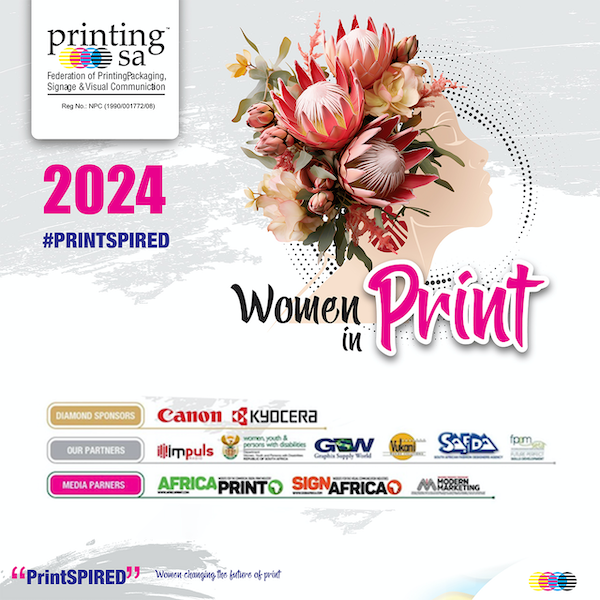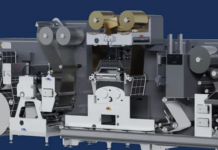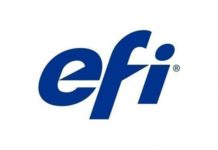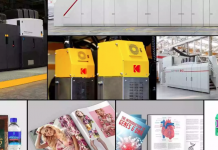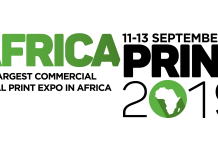Africa Print celebrates Women’s Month by interviewing some of the female trailblazers who are making strides in the industry. They give their take on major industry trends, as well as advice to young women starting their careers in the print industry.
What trends do you predict for the future of the print industry in relation to digital media?
Jean Lloyd, Global Principal Analyst – Digital Labels and Packaging at Keypoint Intelligence, said that the future of the print industry is closely tied to the integration of digital media, creating a hybrid landscape where both mediums complement each other.
‘One significant trend is the increasing use of personalised print, driven by data from digital platforms. Variable Data Printing is far from new in digital printing, but it was never the success we expected; it appears the world is ready for it now. As consumers demand more personalised experiences, print will adapt by leveraging digital insights to deliver customised content in packaging, marketing materials, and other printed communications,’ said Lloyd.
Another trend is the rise of interactive print, where traditional print media incorporates digital elements like QR codes, NFC, and augmented reality (AR). ‘These technologies allow print to bridge the physical and digital worlds, providing consumers with a more engaging and immersive experience. Sustainability will also play a crucial role, with the print industry embracing eco-friendly materials and processes driven by consumer demand and regulatory changes,’ added Lloyd.
Heidie-Mari Middel, Production Team Leader, Production Print at KYOCERA Document Solutions South Africa, said it is increasingly catering for the ‘niche’ market in the form of shorter runs of very personalised and individual printing of content. For example, wine labels and the packaging that goes with it. ‘We see this a lot in the liquor industry. Educational books, coupled with the story and illustration of the book based on the area and language of where the children are being taught, will be easier to facilitate. The use of QR codes and the integration of digital tools, together with the physical print, will become more advanced and will be used more to leverage both advertising on print media and digital media platforms. This will be done where you can scan a barcode and access the digital media site that offers videos and different types of information to engage with your consumer more,’ said Middel.
Middel has also noted the enhancements in print quality. ‘If I look at inkjet as a technology 10 years ago versus today, it has evolved and grown immensely. Our company has made a lot of progress in the development of printhead technology, keeping in mind that it needs to be innovative and sustainable – using eco-friendly materials and processes. Products are more self-sustainable, like the new printhead we launched at drupa, with its own water cooling and self-cleaning system,’ said Middel.
How are you preparing for these future trends, and what advice would you give to others in the industry?
Lloyd said that preparing for these trends requires a proactive approach to innovation and a willingness to embrace change. ‘At the Women in Print Cape Town event, it was clear that staying ahead means continuously investing in new technologies and expanding skill sets to include both print and digital expertise. For instance, we’re focusing on integrating digital data analytics with print production to offer more personalised and effective print solutions.’
Lloyd’s advice to others in the industry is to stay curious and open to learning. ‘Don’t see digital media as a threat but as an opportunity to enhance what print can offer. Build partnerships across digital and print sectors to create more robust and versatile communication strategies. Also, prioritise sustainability in your operations, as this will meet consumer expectations and future-proof your business in an increasingly eco-conscious market,’ said Lloyd.
What are the biggest challenges you face in bridging the gap between print and digital media?
Middel said that one of the biggest challenges is audience engagement. ‘It is challenging to keep the modern audience intrigued and captivated, so you have to make sure that what you produce is well designed, is catchy and sends the right message. To be able to do that, you often have to use a lot of different printing techniques like embellishments, spot varnishing, foiling, wordplay and clever use of colour that all add up to the cost. A lot of the time there is budget constraints that make this very difficult to compete or fill the gap between print and digital.’
‘With digital, it is easier to engage and use different interactive elements across different platforms. With print, we often must also rely on the substrate we used and hope we have captivated the right audience. But it is also very limited in the sense that it can only be distributed in a specific area – targeting a specific target market. With each new campaign, the process starts all over again, as with digital it can just be tweaked and be used almost immediately,’ added Middel.
What advice would you give to young women entering the print industry today?
Lloyd said that women should embrace the intersection of print and digital media. ‘The industry is evolving, and those navigating both worlds will be the most successful.’
‘Don’t be afraid to bring fresh perspectives and new ideas to the table; the industry needs innovative thinkers who can help reshape its future,’ she added.
Lloyd said that networking is also crucial and that you should attend industry events like Women in Print to connect with mentors and peers who will support your journey. ‘The industry is welcoming, and there are numerous opportunities for growth and leadership.’
Lastly, Lloyd advised women to be resilient and confident in their abilities. ‘The print industry, like many others, can be challenging, but it is also incredibly rewarding. Your contributions are valuable, and your voice is needed to help drive the industry forward. Believe in your potential and proactively seek opportunities that align with your career goals. This industry has been a blessing for my family and me. I have lived and worked in many countries, and my girls have had an international education. I am so passionate about the industry and what it can offer.’
Middel said you should gain as much technical skills and knowledge as possible. ‘Knowledge is power. You also need to be aware of all the new technologies that have been released, as well as the trends and how they all interact with different types of sectors within the print industry.’
Middel also advised women to build relationships across all available platforms. ‘This will provide mentors that can help and guide you, and you will be able to map your career, and receive advice from people that are successful and have been through the teething steps. It will also create opportunities to grow,’ concluded Middel.
PRINTING SA
+27 11 287 1160
info@printingsa.org
http://www.printingsa.org


